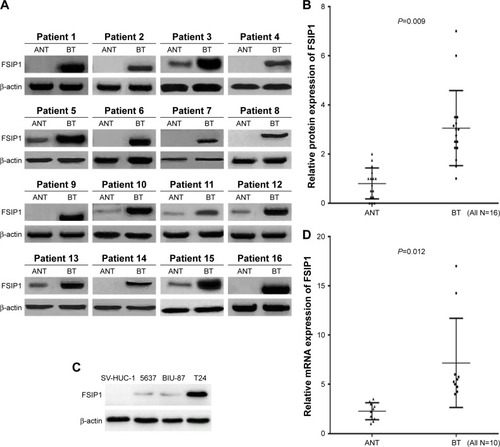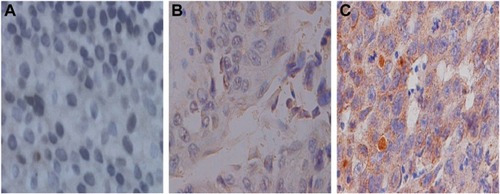Figures & data
Table 1 The comparison of clinicopathological characteristics between FSIP1-positive and FSIP1-negative bladder cancer patients (n=225)
Figure 1 Expression of FSIP1 in bladder cancer cell lines and human bladder tumor tissues.
Abbreviations: ANTs, adjacent noncancerous tissues; BTs, bladder tumor tissues; FSIP1, fibrous sheath interacting protein 1; PCR, polymerase chain reaction.

Figure 2 Immunohistochemical staining of fibrous sheath interacting protein 1 in bladder cancer tissues (×400 magnification).

Table 2 Correlation between fibrous sheath interacting protein 1 expression and the clinicopathological characteristics of bladder cancer by Spearman’s correlation analysis
Figure 3 Kaplan–Meier survival analysis of overall survival, disease-specific survival, progression-free survival, and metastasis-free survival between FSIP1-positive and FSIP1-negative bladder cancer patients (n=225).
Abbreviation: FSIP1, fibrous sheath interacting protein 1.

Table 3 The prognostic factors for overall and disease-free survival in bladder cancer patients by univariate Cox regression analysis (n=225)
Table 4 The prognostic factors for overall and disease-free survival in bladder cancer patients by multivariate Cox regression analysis (n=225)
